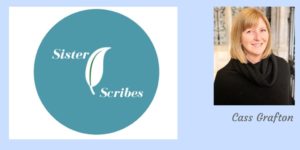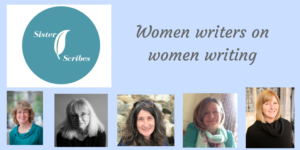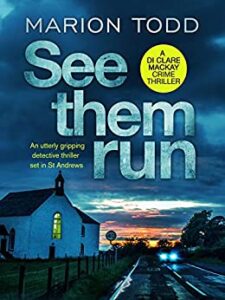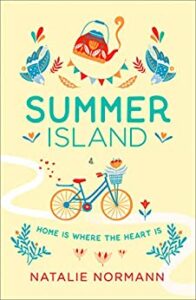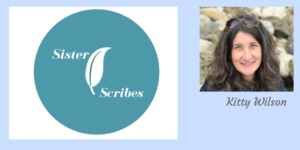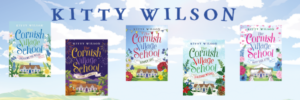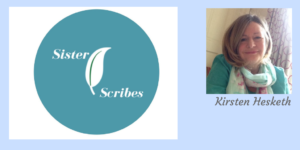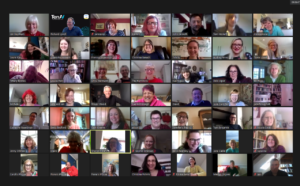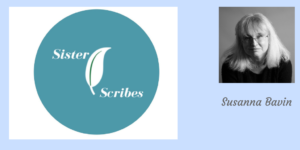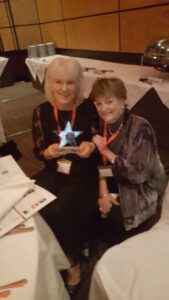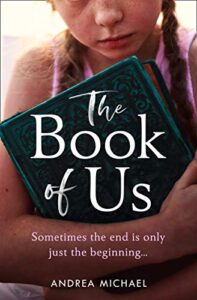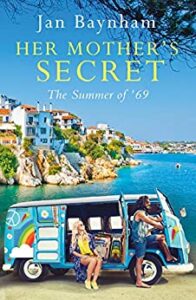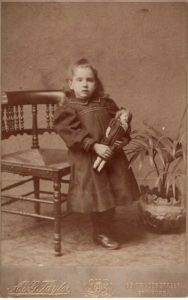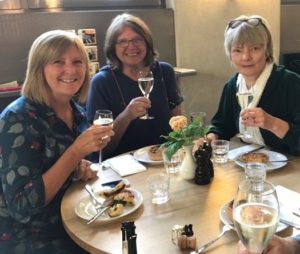Living in Switzerland for the past six years, we’ve been fortunate enough to visit some wonderful locations, many with literary connections.
For example, JRR Tolkien made a trip to Switzerland in 1911 and took inspiration from the scenery to create the settings for some scenes in The Hobbit and the Lord of the Rings trilogy. His journey took him to many iconic locations, including Zermatt—home to the Matterhorn—and Lauterbrunnen, a verdant and picturesque valley with over 70 waterfalls.
The author wrote to his son, Michael, in 1967: I am delighted that you have made the acquaintance of Switzerland, and of the very part that I once knew best and which had the deepest effect on me. The hobbit’s journey from Rivendell to the other side of the Misty Mountains, including the glissade down the slithering stones into the pine woods, is based on my adventures in 1911.
 This is not the only Tolkien connection with the country. The unique Greisinger Museum in the village of Jenins is dedicated entirely to Middle-earth and contains unique artefacts, art, literature and collectors’ items, and you enter through a door into a hobbit hole!
This is not the only Tolkien connection with the country. The unique Greisinger Museum in the village of Jenins is dedicated entirely to Middle-earth and contains unique artefacts, art, literature and collectors’ items, and you enter through a door into a hobbit hole!
Not far from Lauterbrunnen is another place with a literary connection: Meiringen. The town is in a beautiful valley and is famous for the stunning Reichenbach Falls, portrayed by Sir Arthur Conan Doyle in his Sherlock Holmes’ novel, The Final Solution.
These were not unexpected literary connections, however, being popular tourist destinations.
One of our early discoveries was idyllic Weggis, a small resort town lying on the shores of Lake Luzern and at the foot of Mount Rigi (known as the Queen of the Mountains) from whose summit there are stunning views of the lake and a spectacular vista of the Alps.
Modern day visitors take a train to the summit, but before the Victorians constructed this cogwheel mountain railway (the first of its type in Europe, opening in 1871), wealthy people travelled up Rigi by sedan chair. The mind boggles!
Weggis is such a beautiful place. The water is a deep, aqua blue, almost transparent by the shoreline, and the mountains across the water stand out starkly from it, glowing in the bright summer sun or wearing snowy caps in winter. There is an ethereal light gently embracing the rocky outcrops at all times of year; a light that changes with the seasons. Being there is like taking a deep breath of fresh air, bringing a sense of calm, of escape from the everyday world.
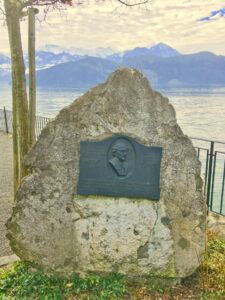 Imagine my surprise, however, to discover that American author, Mark Twain, had also visited the little-known town of Weggis and felt very much the same. In 1897 he wrote: This is the charmingest place we have ever lived in for repose and restfulness, superb scenery whose beauty undergoes a perpetual change from one miracle to another, yet never runs short of fresh surprises and new inventions.
Imagine my surprise, however, to discover that American author, Mark Twain, had also visited the little-known town of Weggis and felt very much the same. In 1897 he wrote: This is the charmingest place we have ever lived in for repose and restfulness, superb scenery whose beauty undergoes a perpetual change from one miracle to another, yet never runs short of fresh surprises and new inventions.
I do, of course, take some words attributed to Mark Twain with a grain of salt. He is famously quoted as saying of Jane Austen, ‘Everytime I read ‘Pride and Prejudice’ I want to dig her up and beat her over the skull with her own shin-bone.’
Anyone professing such strong feelings against a book, yet continually attempting to re-read it, must be considered a bit of a contradiction! Jane Austen, I’m sure, would have been excessively diverted, and talking of diversions, it’s time I went off to look at the diary in readiness for booking another trip to Weggis.
Sources: MySwitzerland.com, The Letters of JRR Tolkien and Mark Twain – A Biography by Albert Bigelow Paine

